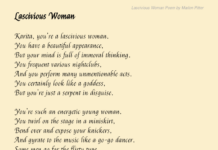In the realm of contemporary pop culture, the intersection of celebrity and cultural sensitivity presents a complex tapestry of issues, particularly in the context of cultural appropriation. Such discussions gained prominence with the emergence of Gwen Stefani, an artist who has consistently garnered both admiration and criticism for her artistic choices. The recent debates surrounding her portrayal of Native American culture, particularly within the framework of her performances on the television show “The Voice,” compel a deeper examination of the implications of her actions. How is it that Gwen Stefani continues to navigate these treacherous waters of cultural representation without facing stringent repercussions?
To delve into this question, one must first contextualize cultural appropriation. Cultural appropriation refers to the adoption of elements of one culture by members of another culture, often without permission and typically those from a dominant culture adopting aspects of marginalized cultures. This manifests in various forms, be it through fashion, music, or art. Stefani’s artistic endeavors, infused with elements that resonate with the imagery of Native American culture, have now turned into a contentious symbol of this phenomenon.
The persistent attempts by Stefani to integrate aspects of Native American culture into her persona raise significant inquiries. Significantly, the concerns transcend mere aesthetic choices. The impact of these decisions reverberates through history, social dynamics, and the ongoing struggles faced by Indigenous communities. To comprehend Stefani’s continued presence in this dialogue, one must unravel the implications of her actions through historical and sociocultural lenses.
One cannot overlook Gwen Stefani’s iconic status within the entertainment industry. Rising to fame in the 1990s as the frontwoman of the band No Doubt, her unique blend of ska, punk, and pop, coupled with her striking visual style, endeared her to many fans while simultaneously establishing her as a fashion icon. This synthesis often included vivid costumes and themes that reflect various cultural influences. Over the years, Stefani’s nods to diverse cultures have morphed into a signature aspect of her public persona, yet this journey through cultural elements often blurs the lines between homage and appropriation.
The 2014 performance at New York Fashion Week displayed her donning a Native American war bonnet, a move that ignited substantial backlash. The war bonnet, symbolizing honor and respect among Native American tribes, was stripped of its traditional significance and commodified as a mere accessory. This egregious oversight exemplifies how popular figures oftentimes neglect the historical and contextual underpinnings inherent in cultural artifacts. Rather than celebrating the cultural uniqueness of Indigenous communities, such actions instead commodify their rich traditions, relegating them to the realm of fashion statements.
Subsequent reactions encapsulated the outrage echoed across social media platforms and within the broader community of cultural commentators. Advocates for Indigenous rights have continuously articulated the damage done when cultural symbols, laden with layers of meaning, are co-opted by those outside the culture. The perpetrators of cultural appropriation need to comprehend that their actions can perpetuate stereotypes and displace the narratives of the people whose cultures they are borrowing from.
Another pivotal dimension in understanding Stefani’s actions lies in the accommodation of cultural representations within the entertainment industry at large. The industry has a historical track record of prioritizing marketability over cultural sensitivity. Prominent artists, like Stefani, often find themselves in an ecosystem shaped by commercial interests where creative freedom frequently overshadows the lived realities of marginalized communities. In this context, questions pertaining to accountability arise. Why do contemporary standards of cultural awareness appear to evade artists who persistently engage in appropriation?
Despite each controversy Stefani has faced, she has navigated the criticism with relative ease, continuing to receive opportunities that echo her established brand. The resilience of her career raises pertinent inquiries about the criteria determining one’s accountability in an industry rife with double standards. As an artist whose work claims to celebrate individuality, one must interrogate the underlying principles guiding her creative direction. Is the utilization of Native American symbols as an aesthetic choice a conscious act of defiance against the necessity for cultural respect?
The implications of such decisions extend beyond the artist and into the broader societal framework. Cultural appropriation serves to perpetuate a cycle of erasure, reducing cultural identities to fleeting trends rather than acknowledging their historical narratives. When a seemingly unyielding superstar like Stefani navigates the complexities of cultural symbolism without requisite understanding or acknowledgment, it diminishes the cultural significance embodied in such symbols. The potential for education within these interactions remains untapped, as well-known figures could bring awareness to Indigenous rights and issues, instead of relegating them to mere performances.
The public reaction to Stefani’s choices constitutes a reflection of societal shifts towards greater sensitivity concerning cultural representation. The evolution of collective consciousness necessitates that figures in positions of power must engage with their implications when dabbling in culturally significant representations. As audiences grow increasingly aware, the expectation for accountability rises accordingly. This culture of awareness, however, has yet to substantially hold Stefani or others akin to her accountable for repeating these transgressions.
In analyzing the dichotomy of artistic freedom and cultural respect, one must recognize the pressing need for dialogues that foster understanding. For many artists, the use of cultural symbols serves as an expression of appreciation; however, discussions must crystallize into actions that transcend mere acknowledgement. Educational initiatives within the entertainment sphere, aimed at enlightening artists about the implications of appropriating cultural symbols, form part of a necessary evolution of the dialogue surrounding cultural appropriation.
The case of Gwen Stefani encapsulates the juxtaposition of creative expression and the ethics of cultural representation. Her illustrious career provides a unique vantage point for an ongoing conversation that scrutinizes how entertainment intersects with issues of race, respect, and representation. As society collectively pushes towards a more informed understanding of cultural appropriation, it is pivotal that figures like Stefani consider the messages they propagate through their art. This dialogue cannot solely reside within the vacuous realm of popular culture; it requires rigorous examination and a commitment to genuine representation that honors the cultures from which they draw inspiration.
Ultimately, Gwen Stefani’s complicity in the appropriation of Native American culture, amidst the backdrop of her performances on “The Voice,” is emblematic of broader issues within the entertainment industry and society at large. Adopting a critical lens enables a deeper appreciation of how cultural narratives are constructed and deconstructed through the lenses of those in positions of power. Stefani’s career journey is undoubtedly a reflection of this ongoing dialogue, one that invites scrutiny and demands accountability in equal measure.





























